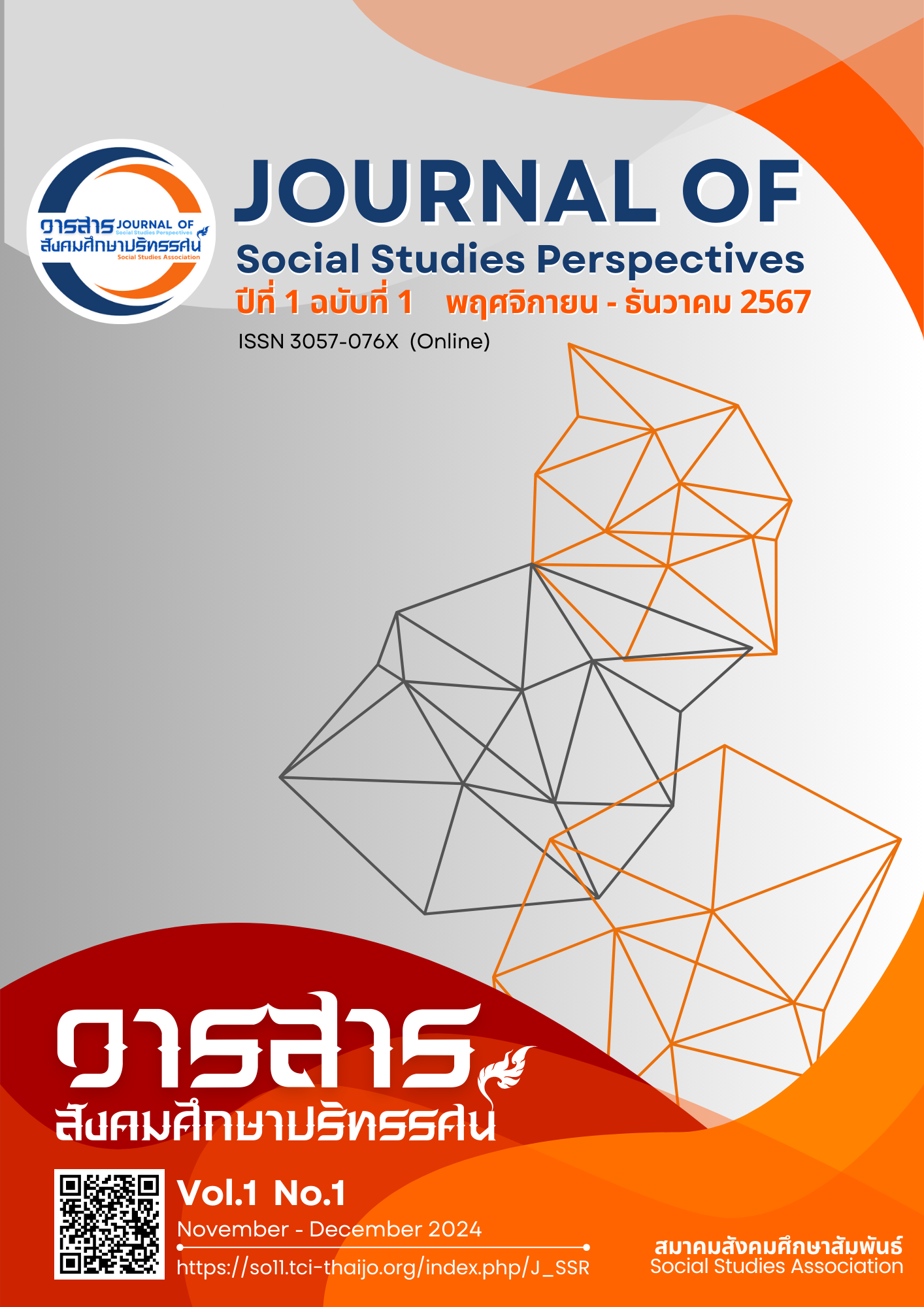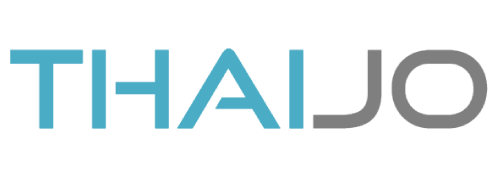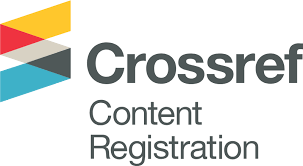ทฤษฎี PERMA: กุญแจสู่องค์กรแห่งความสุข
DOI:
https://doi.org/10.64186/jsp1070คำสำคัญ:
ทฤษฎี PERMA, ความสุขในองค์กร, การพัฒนาทรัพยากรมนุษย์, ความผูกพันของพนักงาน, ประสิทธิภาพการทำงานบทคัดย่อ
ทฤษฎี PERMA ที่พัฒนาโดย Martin Seligman เป็นกรอบแนวคิดสำคัญในการเสริมสร้างความสุขและความเจริญรุ่งเรืองในชีวิตและการทำงาน ประกอบด้วย 5 องค์ประกอบหลัก ได้แก่ อารมณ์เชิงบวก การมีส่วนร่วม ความสัมพันธ์ ความหมาย และความสำเร็จ การประยุกต์ใช้ทฤษฎีนี้ในบริบทองค์กรสามารถส่งผลเชิงบวกต่อความผูกพันของพนักงาน ประสิทธิภาพการทำงาน และวัฒนธรรมองค์กร บทความวิชาการนี้ผู้เขียนจะนำเสนอ 1) ความเป็นมาและความสำคัญของทฤษฎี PERMA โดยอธิบายถึงรากฐานและการพัฒนาของทฤษฎี รวมถึงความสำคัญในบริบทองค์กร 2) การวิเคราะห์องค์ประกอบทั้ง 5 ด้านของ PERMA ในบริบทองค์กร โดยเชื่อมโยงกับแนวคิดอื่นที่เกี่ยวข้อง เช่น แนวคิด Flow ของ Csikszentmihalyi และการมีส่วนร่วมในงานของ Kahn 3) ผลการศึกษาวิจัยล่าสุด เกี่ยวกับการประยุกต์ใช้ PERMA ในองค์กร โดยนำเสนอข้อค้นพบสำคัญและแนวโน้มการวิจัยในปัจจุบัน 4) การวิเคราะห์องค์ประกอบของ PERMA ในบริบทองค์กร โดยเชื่อมโยงกับแนวคิดอื่นที่เกี่ยวข้อง และ 5) แนวทางการนำ PERMA ไปใช้ในการพัฒนาทรัพยากรมนุษย์และการสร้างองค์กรแห่งความสุข รวมถึงข้อเสนอแนะเชิงปฏิบัติสำหรับการประยุกต์ใช้ทฤษฎีนี้ในบริบทองค์กร องค์ความรู้จากบทความนี้ จะเป็นประโยชน์ต่อผู้บริหารและนักพัฒนาทรัพยากรมนุษย์ในการนำแนวคิด PERMA ไปประยุกต์ใช้เพื่อเสริมสร้างความสุขและประสิทธิภาพในองค์กร โดยนำเสนอมุมมองที่ครอบคลุมทั้งทฤษฎีและการปฏิบัติ พร้อมทั้งข้อมูลวิจัยล่าสุดที่สนับสนุนประสิทธิผลของการใช้ PERMA ในการพัฒนาองค์กร
เอกสารอ้างอิง
Boehm, J. K., & Lyubomirsky, S. (2020). The promise of sustainable happiness. In S. J. Lopez (Ed.), Handbook of positive psychology (2nd ed., pp. 667–677). Oxford University Press.
Cohn, M. A., Fredrickson, B. L., Brown, S. L., Mikels, J. A., & Conway, A. M. (2009). Happiness unpacked: Positive emotions increase life satisfaction by building resilience. Emotion, 9(3), 361–368. https://doi.org/10.1037/a0015952
Csikszentmihalyi, M. (1990). Flow: The psychology of optimal experience. Harper & Row.
Diener, E., Oishi, S., & Tay, L. (2018). Advances in subjective well-being research. Nature Human Behaviour, 2, 253–260. https://doi.org/10.1038/s41562-018-0307
Saks, A. M. (2019). Antecedents and consequences of employee engagement revisited. Journal of Organizational Effectiveness: People and Performance, 6(1), 19–38. https://doi.org/10.1108/JOEPP-06-2018-0034
Schaufeli, W. B., & Bakker, A. B. (2004). Job demands, job resources, and their relationship with burnout and engagement: A multi-sample study. Journal of Organizational Behavior, 25(3), 293–315. https://doi.org/10.1002/job.248
Seligman, M. E. P. (2011). Flourish: A visionary new understanding of happiness and well-being. Free Press.
Tims, M., & Bakker, A. B. (2023). Weekly reciprocal relationships between job crafting, work engagement, and performance a within-person approach. Frontiers in Organizational Psychology, 1, Article 1200117. https://doi.org/10.3389/forgp.2023.1200117
Trudel, N., Lockwood, P. L., Rushworth, M. F. S., & Wittmann, M. K. (2023). Neural activity tracking identity and confidence in social information. eLife, 12, Article e71315. https://doi.org/10.7554/eLife.71315
Van den Broeck, A., Howard, J. L., Van Vaerenbergh, Y., Leroy, H., & Gagné, M. (2021). Beyond intrinsic and extrinsic motivation: A meta-analysis on self-determination theory's multidimensional conceptualization of work motivation. Organizational Psychology
Review, 11(3), 240–273. https://doi.org/10.1177/20413866211006173
Zhao, X., & Lu, Y. (2022). Fostering employee engagement through workplace friendship: The roles of psychological safety and power distance orientation. International Journal of Environmental Research and Public Health, 19(3), 1192. https://doi.org/10.3390/ijerph19031192
Zhao, X., Sun, T., Cao, Q., Li, C., Duan, X., Fan, L., & Liu, Y. (2023). The impact of job crafting on work engagement through psychological empowerment: A moderated mediation model. Frontiers in Psychology, 14, Article 1130998.
ดาวน์โหลด
เผยแพร่แล้ว
รูปแบบการอ้างอิง
ฉบับ
ประเภทบทความ
หมวดหมู่
สัญญาอนุญาต
ลิขสิทธิ์ (c) 2024 วารสารสังคมศึกษาปริทรรศน์

อนุญาตภายใต้เงื่อนไข Creative Commons Attribution-NonCommercial-NoDerivatives 4.0 International License.
บทความนี้ได้รับการเผยแพร่ภายใต้สัญญาอนุญาต Creative Commons Attribution-NonCommercial-NoDerivatives 4.0 International (CC BY-NC-ND 4.0) ซึ่งอนุญาตให้ผู้อื่นสามารถแชร์บทความได้โดยให้เครดิตผู้เขียนและห้ามนำไปใช้เพื่อการค้าหรือดัดแปลง หากต้องการใช้งานซ้ำในลักษณะอื่น ๆ หรือการเผยแพร่ซ้ำ จำเป็นต้องได้รับอนุญาตจากวารสาร










